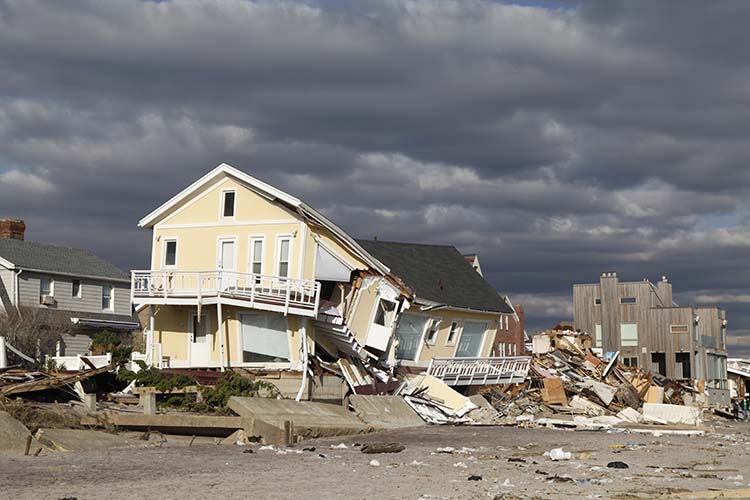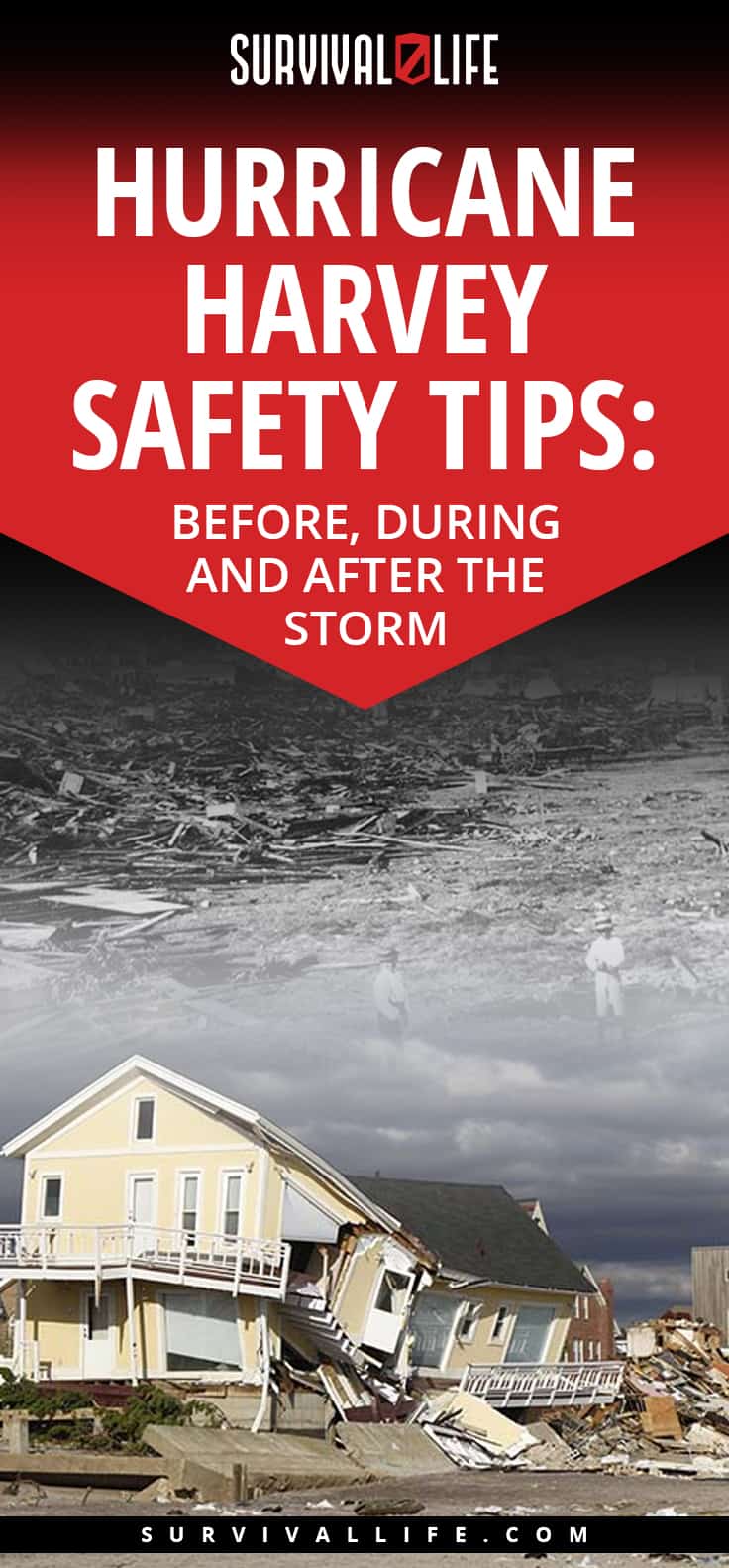Featured Articles
Hurricane Harvey Safety Tips: Before, During and After the Storm

With Hurricane Harvey poised to hit the southeastern coast of the U.S. in a matter of hours, we thought it would be a good time to go back over hurricane survival and preparedness.
In the following article, you’ll learn what to do before, during and after a hurricane to make sure you, your family and you property stay as safe as possible.
Hurricane Harvey Safety Tips: Before, During and After the Storm
Hurricane season is upon us. Being prepared and knowing what to do in the event of a hurricane, as with any type of storm, is the key to staying alive.
The damage left behind after a hurricane can be devastating and very costly. The most important thing to remember with any type of storm: you and your family’s safety is the number one priority! Material possessions can be replaced — a human life cannot.
To understand just how important hurricane safety is, let’s go over just a few of the most memorable hurricanes in recent history.
Charley (August 2004)
At a category 4 classification, Charley was the strongest storm to hit the U.S. since 1992’s Andrew, which clocked in at category 5. In Punta Gorda, Florida, where the hurricane made landfall, winds clocked in at 112 miles per hour – before they destroyed the measuring equipment, that is. Damages amounted to $14 billion in Florida, South Carolina, and North Carolina.
Katrina (August 2005)
This category 3 hurricane is the costliest in U.S. history, with damages estimated at $81 billion. It’s also one of the deadliest, with deaths exceeding 1,800 in Florida, Louisiana, Mississippi, and Alabama. Winds reached a maximum of 175 miles per hour, but most of the storm’s devastation resulted from levy failure in the low-lying city of New Orleans.
Ike (September 2008)
Although it was classified as a category 2 storm, Ike remains the third costliest hurricane in U.S. history after Katrina and 1992’s Andrew. Total damage was $25 billion – mostly in Florida, Texas, Louisiana, and Arkansas.
Sandy (October 2012)
Hurricane Sandy was the deadliest and most destructive hurricane of the 2012 Atlantic hurricane season, and the second-costliest hurricane in United States history. Estimated damage of about $75 billion – a total surpassed only by Hurricane Katrina. At least 233 people were killed along the path of the storm in eight countries.
The deadliest hurricane to ever hit the United States? The Great Galveston Hurricane of 1900
This storm caused between 8,000 and 12,000 deaths. The storm reached the Texas coast south of Galveston on September 8,1900 as a category 4 hurricane with a storm surge of 8 to 15 feet. The lack of proper warning in 1900 made this storm the deadliest in U.S. history.
Safety measures we’ll cover:
Before the storm
- Staying up-to-date with weather alerts and warnings
- 72 hour emergency kits
- Family meetings on emergency safety
During the storm
- Evacuation – what to do if you evacuate (or if you don’t)
- Flood safety measures
- What to do in the event of a power outage
After the storm
- Returning home and what to do next
- First aid
- Things to watch for
- Assessing damage

Check out more hurricane survival tips here.
Before the Storm
Unlike a tornado, a hurricane can be tracked for days or even weeks before it hits, giving you time to prepare your home, your family and yourself for the storm. Here. are a few things you can do to get ready before a hurricane
1. Know where to tune in for weather updates when a hurricane watch or hurricane warning has been posted. Watch the weather reports on your television or check the weather reports online at Weather.com. Having a weather radio is a great backup resource in the event of a power outage. Make sure to have plenty of batteries.
2. Always have your cell phone charged completely. If you know bad weather is headed your way, charge your phone and try to keep it charged at a 100%. In the event of an evacuation, make sure to have a waterproof way to carry your cell phone.
3. Have a 72-hour emergency kit packed and ready to grab on your way out to safety. Every member of the family should have one. Check out this great article on how you can assemble the perfect 72 hour kit.
4. Have a family meeting to discuss what you and your family will do in the case of an evacuation. It is important to include EVERY family member, even the little ones.
During the Storm
You may think that once a storm hits there’s nothing you can do, but that’s just not true. Here are a few actions you can take to keep yourself and your loved ones safe in the midst of a hurricane.
1.If you are advised to evacuate, don’t wait! The longer you wait the more hectic traffic becomes. Being stuck in traffic can propose a whole new emergency situation.
2. Avoid flooded roads. Six inches of water is all it takes to float a car. Keep an eye out for flood compromised or washed out bridges.
3. Make sure someone outside the storm area knows where you will be and how to reach you.
4. If you do not evacuate, stay indoors and off the roads. Stay away from windows and doors.
5. If power is lost, unplug all electrical appliances to prevent damage from power surge when service resumes.
6. Keep emergency supplies (your 72-hour kit) ready to go.
What’s in your #bugoutbag? Check out our ultimate bug out bag list. https://t.co/fWO5QKsZpR pic.twitter.com/Iy82jbHSPs
— Survival Life (@SurvivalLF) August 9, 2016
7. Listen to local radio for changes in the weather situation and instructions.
8. If flooding occurs, move your valuable property to higher locations in your home, if time permits. Move yourself and your pets to higher ground or shelter.
9. Be sure to lock your home and take emergency supplies, clothing, and bedding with you.
After the Storm
After the hurricane comes time to assess the damage, provide aid to the injured and figure out how to proceed in the aftermath of the storm. With any luck, your preps before and during the hurricane will help to mitigate the damage. Here’s what you should do after a hurricane.
1. Continue to monitor local radio for information.
2. Return home only after authorities have announced it is safe to do so. When you reenter your home, do so cautiously. Check for displaced wildlife such as snakes. If necessary, open doors and windows to ventilate and help dry your home.
3. Give first aid where necessary. Do not move a seriously injured person unless they are in imminent danger. Call for emergency help.
4. Watch for and avoid downed power lines.
5. Avoid using the phone except in emergency. This will keep the phones free for authorities and those in more dire straits.
6. Check for damaged electrical wiring. Look for sparks or frayed wires. Hot or melting wiring insulation cause an acrid smell. If you notice any damage, cut off the power at the fuse or circuit breaker box, but do not touch the box if you have to stand in water. In the latter case you should check with an electrician.
7. Avoid using candles, kerosene lamps, or other open flame sources for heat or light. Candles cause more fires after a disaster than any other source. If you must use a candle or open flame lamp, take extreme care to keep pets, children, and combustibles away from the flame.
8. If you smell or hear the hiss of leaking gas, leave the house. If you can, turn off the gas line at the cut off valve outside your home. Call the utility company from your cell or from another location.
9. Inspect your water lines and other plumbing. If you think there has been any damage, avoid using toilets and do not drink the tap water.
10. Check your freezer and refrigerator for spoiled food.
11. Don’t burn charcoal in an enclosed area. Doing so can cause buildup of deadly carbon monoxide.
12. Take photos of any damaged items. Place damaged items outside if they cannot be salvaged but try to avoid discarding them until they have been looked at by an insurance adjuster.
Do you live in a hurricane-prone area? What do you do to prepare? Let us know in the comments!
FURTHER READING:
*this post was originally published August, 2016. We have updated it for accuracy and relevancy in time for Hurricane Harvey. August, 25, 2017*

-

 Do It Yourself7 months ago
Do It Yourself7 months agoParacord Projects | 36 Cool Paracord Ideas For Your Paracord Survival Projects
-

 Do It Yourself9 months ago
Do It Yourself9 months agoHow To Make Paracord Survival Bracelets | DIY Survival Prepping
-

 Do It Yourself9 months ago
Do It Yourself9 months ago21 Home Remedies For Toothache Pain Relief
-

 Do It Yourself10 months ago
Do It Yourself10 months agoSurvival DIY: How To Melt Aluminum Cans For Casting
-

 Exports8 months ago
Exports8 months agoAre Switchblades Legal? Knife Laws By State


Pingback: BREAKING: Hurricane Patricia "Potentially Catastrophic" | Survival Life
Pingback: Severe Weather Survival Tactics You Need To Know « Survivalist
Pingback: Hurricane Katrina: Unity in the Midst of Devastation | Survival Life
Pingback: Hurricane Katrina: Unity in the Midst of Devastation « Survivalist
Pingback: Hurricane Katrina: Unity in the Midst of Devastation | Savvy About Survival
Pingback: Hurricane Survival Tips: How to Survive Natural Disasters
Pingback: 17 Ways to Storm-Proof Your Home | Survival Life
Pingback: The Ultimate Hurricane Supply Kit (Infographic) | Survival Stronghold
Pingback: How to Survive Martial Law | Survival Life
Pingback: Severe Weather Survival Tactics You Need To Know | Survival Life
Pingback: Importance of Preparedness | Survival Life
Pingback: Hurricane Harvey Safety Tips: Before, During and After the Storm – Survive The Outdoors
Pingback: Have A Storm-Proof House With These 17 Trouble-Free Tips
Pingback: Buying, Using, and Maintaining a Generator [Survival Life]
Pingback: Martial Law Survival: Are Your Prepared? | Common Sense Survival
Pingback: Safety Tips for Severe Weather | Survival Life
Pingback: 10 Martial Law Survival Tactics You Need to Know Now - Survive!
Pingback: 10 Martial Law Survival Tactics You Need to Know Now
Pingback: 17 Proven Ways To Storm-Proof Your Home - Survive!
Pingback: 17 Proven Ways To Storm-Proof Your Home | survivalisthandbook.com
Pingback: 17 Proven Ways To Storm-Proof Your Home
Pingback: Flood Survival Tips | How To Survive Before, During, And After A Flood
Pingback: Hurricane Preparedness with Crown Weather [PODCAST] – The Self-Sufficient Life
Pingback: Hurricane Preparedness with Crown Weather [PODCAST] – Alive After USA Fall
Pingback: Hurricane Preparedness with Crown Weather [PODCAST] – surviveurself
Pingback: Hurricane Preparedness with Crown Weather [PODCAST] - Cooking in Quarantine
Pingback: Hurricane Preparedness with Crown Weather [PODCAST] – SurvivalHood
Pingback: Hurricane Preparedness with Crown Weather [PODCAST] | Best Go Bag
Pingback: Hurricane Preparedness with Crown Weather [PODCAST] - My Blog
Pingback: Hurricane Survival Tips: How to Survive Natural Disasters - Primal Survival